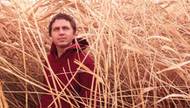There is a school of thought that poetry, being an art perpetually on the fringe, is freer to explore taboo subjects than prose. When Allen Ginsberg first performed parts of his Howl manuscript at a gallery in San Francisco on October 7, 1955, the rhapsodically incoherent poem in long shambling lines of free verse was clear in one way: the announcement that the taboos and hidden things of American life were eating the nation’s soul. But certainly Ginsberg could not have known of the great fame that would follow him for the rest of his life after that night. A month earlier the 29-year-old poet had been working as a baggage handler at a Greyhound terminal. Howl was meant as art at the fringes. Though Ginsberg went on to give full readings of the poem in sympathetic locations like Berkeley, it would be a year before he published it. Thanks to its graphic depictions of sex (gay and straight), drug abuse and madness, in 1957 a clerk was arrested on obscenity charges for selling a copy to undercover officers. The attention of the trial announced Allen Ginsberg to America, making him the nation’s best-known poet until his death in 1997. In 2009 there is no comparable figure. And now Howl is again words without celebrity.
So it was a slight surprise that a local group, Word Up! Poetry, last week dedicated its weekly gathering at the Coffee Bean and Tea Leaf, across from UNLV, to a recitation of Howl, in its entirety. Certainly, this time there were no undercover cops present among the fewer than a dozen attendees. Or, based on the age of most present, they would have been long retired. One man mentioned he was a professional poker player and had a good day at the tables. A couple of younger people nervously looked over their own verse, which they signed up to read before the Ginsberg piece.
One of the younger readers was a mother who had two children with her, and all three signed up to read. The first child yelled too loudly into the microphone for coherence, but everyone applauded nicely. Then her little sister performed, shouting her name five times. Since her name happened to be Allen, she delivered a line of perfect, though rarely used, trochaic pentameter. The mother than started to read her poem, a long one, filled with childhood neglect and dysfunctional families. While she went on and on, getting more emotional, her daughters lost interest in doodling and ran to the front and began to jump around her. As the mother’s voice welled toward some emotional climax, one girl pulled the speaker to the floor, bringing everything to a crashing halt. The mother decided not to finish the poem, and they were gone before Howl.
Howl was a bit anticlimactic. It is a very long poem, and Ginsberg himself frequently read only extracts. This reading was accompanied by drumming and bells that, from where I was sitting, rendered individual words hard to make out. One interesting change: Ginsberg’s famous “negro streets” were now “ghetto streets.”
Still, one thing was clear: More than 50 years after publication, Howl has returned from the land of celebrity and campus popularity to where it emerged from, a message from the fringe past to a group of admirers in a future time. The coffee shop is now a chain, and “negro” sounds anachronistic. But the whispered Howl in 2009 is still heard by those who pay attention to poetry, as few as that may be.






Previous Discussion: